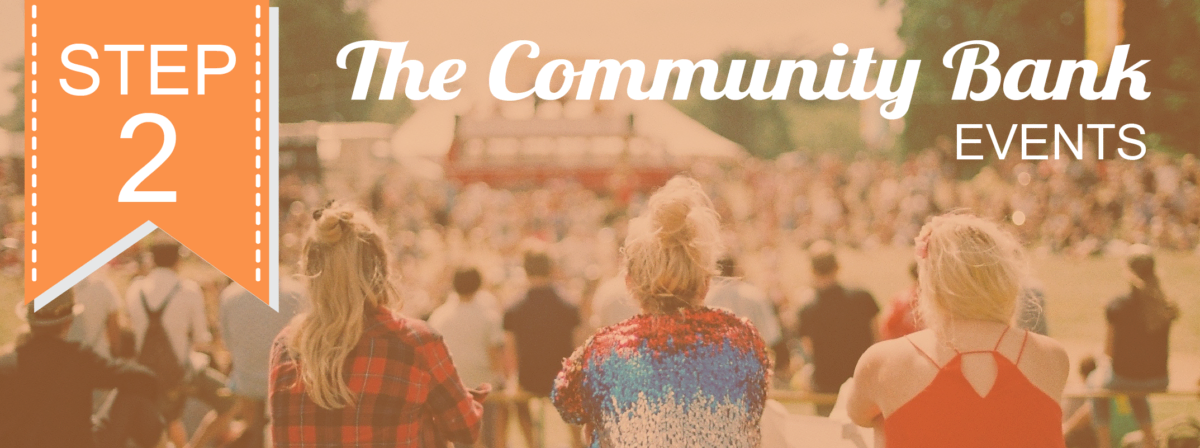A guide on building your relationships and growing engagement with your customers
Establishing yourself as the community bank is a process. It requires investment, commitment and dedication to building relationships and growing trust with your customers. While it is not necessarily quick – it is effective. Especially when the financial industry is facing ever going competition. A previous post in this series mentioned the benefits of sponsorships and how it helps raise awareness of your brand. Other insights are available covering topics such as donations, community drives, marketing and more. Step two, however, centers on creating the best event possible to entertain and attract your customers.
A reality of the digital landscape of today is that it is oversaturated. Every day, thousands of posts, content and advertisements vie for a consumer’s ever-dwindling attention. The crowded online realm makes it hard to stand out. This is why turning towards a more offline medium, such as events, offers both a unique and effective alternative. There is a science to holding a business event as you will soon learn that it is a thin line between successfully meeting your business goals and wasting an investment.
Objective
The most common downfall of events stems from a lack of clarity. Too often, clients attend a function with little to no ideas as to its purpose or reason. Setting clear intentions with your event will lead to clear results. Are you holding an event to benefit a local project? Is it a fundraiser to support a school function? Whatever the event is, make its purpose known to all.
Internally, however, objectives play a different role. The costs of an event can quickly add up and having a budget can act as a bulwark against needless expenditures. Also, set target goals for attendance, engagement, and ultimately profitability for the event with your staff to allow everyone to work together towards the same objective.
Research
As with all things these days, the more tailored an event, the more engagement it will bring. The first move in this process is to create a guest list. Send invitations to potential attendees and ask that they RSVP. Doing so creates an impetus for them to attend and provides you with a good headcount with which to order food and beverages. Moreover, the guest list paves the road for you to study the participants and devise ways to best sell them to your cause.
Share
Individuals are just as likely to post about an event before attending as they are during it. Capitalize on this fact by creating social media friendly content. Invent a hashtag for the event. Develop content they can easily repost. Post original content from the event such as memorable quotes or images from photo booths to gain traction. While your event is offline, make sure that your advertising is not.
Creating a successful event boils down to a science – the steps can be repeated and remain just as effective. The aforementioned tips are the most important areas to focus on, but we also recommend being aware of the following.
- Set a time that works for most guests and have an emergency plan in place in-case the first venue falls through.
- Don’t feel compelled to offer swag about the event to guests. Keep your giveaways in the same theme as your event.
Be flexible. Murphy’s law likes to strike often during events – stay ahead of the game by thinking of contingency plans for every little thing.


